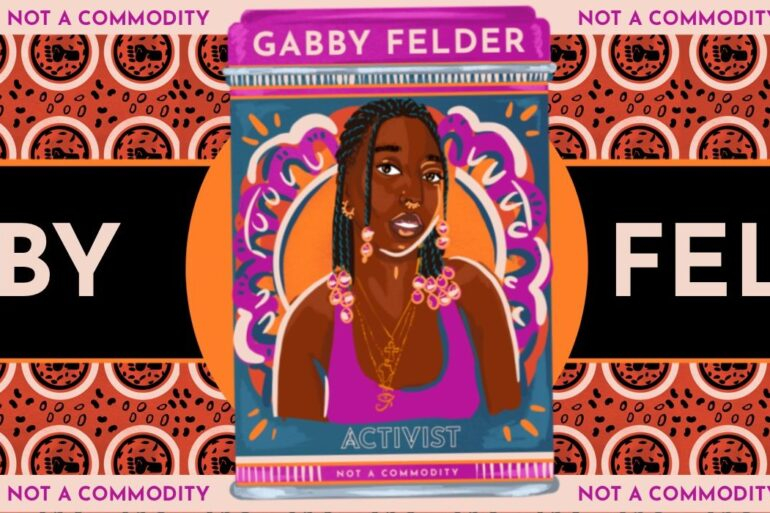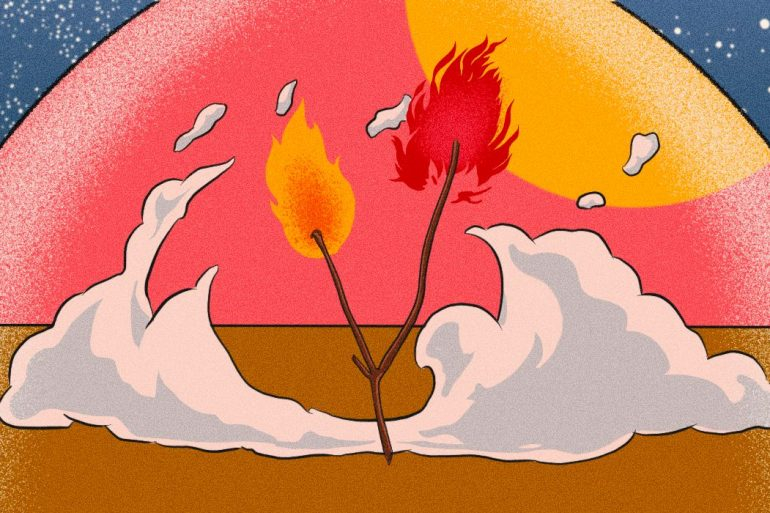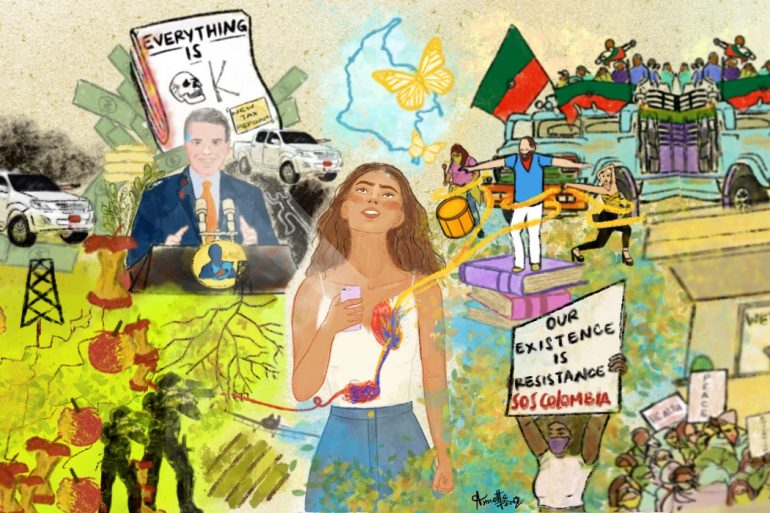Residents of the Jungle camp in Calais collaborated with King’s College London to document daily life in the camp. Come see what the French authorities destroyed in October 2016.
When we planned our research trip to the unofficial refugee camp in Calais in July 2016, we knew that the camp’s days were numbered, but we did not realise how quickly it would be dismantled. It was with the intention of documenting daily life and the experience of migrants living there that we set out to conduct our research. In light of the destruction of the camp in October 2016, we hope that this research will ensure that the Calais camp and the experiences of those living there are not forgotten.
Our principal aim when we began our research was to present a picture of the camp which was painted by the residents themselves. The camp has been well documented; security issues, political stances and actions, as well as descriptions of the camp and the migrants living there. While this documentation is important for understanding the camp in Calais, we wanted to gain a deeper understanding of what it was like to live there.
To achieve this objective, we used a different and innovative approach called auto-photography, which provided migrants in the camp with the tools to share their perspectives and experiences. Through photographs taken on disposable cameras by camp residents themselves, we were able to see the camp through their eyes, rather than through just our own. Residents were able to take photos without the presence of the researchers, thereby allowing them the control to create a visual narrative. In addition, this method enables a more reciprocal interview approach, with the participant guiding the conversation based on the photos they have taken. While us as researchers still asked specific questions and ultimately interpreted what has been said, we believe this method provides participants with more autonomy.
The following images are a selection of the photos taken by residents of the camp that show a variety of aspects of life in the camp. Many of the photos show daily life and routines in the camp. Others demonstrate some of the more complicated issues of being a migrant, such as the difficulty of navigating the asylum process. The included captions incorporate quotes from residents, information gained through interviews, and our own experiences.
“This is our tent”
It is revealing that this was the only comment made about this photo. “This is ours” was the overriding
message. To us, as researchers, this may seem like a picture perfect representation of the precarious situation in which residents of the camp found themselves. Residents did not know whether they would have a shelter to go back to each night; some were destroyed in fires, some collapsed into the mud after heavy rainfall. It is also indicative of the makeshift nature of the majority of the camp, built from whatever materials could be found. For the last 6 months, building materials were not allowed into the camp at all.
For the residents of the camp, however, there was a sense of pride in what they now called home. Of course, for many this came from the fact that they felt lucky to have any form of shelter. Nonetheless, many aspired to keep their shelters and tents clean and decorated with photos of home and family.
We were welcomed into so many shelters and each time we were treated with great hospitality. One family had just returned from the food distribution line when we arrived at their shelter and as they unpacked the food they offered to cook us breakfast. For a family that had to queue for an hour in the morning to feed their son breakfast, this act of sharing was incredibly moving.
No Man’s Land
The open space on the left of the sand dunes used to be filled with tents and shelters. It was cleared by
authorities in January 2016 to create a ‘buffer zone’ between the camp and the motorway. The UK-financed
fence, designed to stop migrants from jumping on lorries on the motorway, is just visible in the distance in this photo.
The residents of the camp turned this attempt to securitise the area into the opportunity to create a sense of community. During the summer, there were regular football and cricket matches and there was an organised sports day for the younger residents whilst we were there in July. Organised by volunteers, there was one simple rule guiding sports day: all teams had to be made up of mixed communities.
The sand dunes had a similar dual-use by authorities and migrants. The police used them as lookout posts
whenever they entered the camp to conduct raids or make arrests. There were days when the dunes were
dotted all along with armed riot police standing watch on the camp below. On other days, it was very common to see migrants gathered on the dunes attempting to get signal on their phones to contact home.
Afternoon Tea
This picture shows the tea van that provided tea to residents in the morning and afternoon. It provides a
glimpse of the formal-informal relationship that existed between the volunteers and the residents of the camp. Most of the residents relied upon the food and supplies from the distribution centres for sustenance. Due to restrictions by the French authorities and limited finances it was difficult for the residents to purchase food from Calais town. Some would get raw ingredients from the distribution centres and cook their own meals. The volunteer organisations distributed food, clothes and other materials necessary for the residents’ survival.
Distribution centres were characterised by long queues of residents waiting for hours for their turn. To manage the increasing numbers and limited resources available, one of the biggest aid organisations created a ticket system, which enabled the organisation to carry out targeted distribution in supplement to the distribution lines. While a big part of the camp’s infrastructure was based around volunteer efforts, it was predominantly built by the residents of the camp. They built shops, cafés and restaurants, which provided another source of food. “We overcharge the volunteers a bit so we can give free meals to new arrivals”, a restaurant owner told us.
“How can I live in this?”
The resident who took this picture described it as the “bad face of the camp”.
Many residents of the camp were very particular about cleanliness and kept their own spaces as clean and tidy as possible. On the other hand, communal spaces were much harder to keep clean and maintained. The main issues included rubbish, toilets, and the presence of rats. In a joint effort volunteers and residents collected rubbish from all over the camp every morning for the Calais authorities to take away. The city authorities also cleaned the public toilets within the camp every morning. Despite the attempt, there was no way to keep the camp hygienic due to the continuously increasing number of residents.
The “bad face of the camp” also refers to aspects of the camp at night which were unrecognisable to the daytime environment. The residents sometimes spoke about clashes between different gangs that existed within the camp and warned us against being in the camp after dark. They often complained about violence and looting and how they had to be careful to not lose the few belongings that remained with them.
Subscribe to shado's weekly newsletter
Exclusive event news, job and creative opportunities, first access to tickets and – just in case you missed them – our picks of the week, from inside shado and out.

“Mum, I will never come back…
Forgive me”
The resident who took this photo also wrote the top line of graffiti. It represents a harrowing message that returning home is often not an option for many, and asks for forgiveness from those left behind. Many residents of the camp expressed the sadness and uncertainty in leaving their homes, friends and family. The resident who took this photo spoke to us about missing his mother and trying to speak with her on the phone two times a week.
A volunteer organisation operating in the camp provided residents with free Internet access. Many of those we spoke with stressed the essential nature of this Internet access in keeping ties to home and also staying informed about news, the situation in home countries and how to continue their journey.
Graffiti was a common sight throughout the camp. It often expressed similar messages of pain and hope, and was a way for migrants to display their feelings. One resident commented that those who come to the camp as volunteers and researchers often experienced the warmth and kindness of residents and therefore, “cannot see all the pain and sadness in the camp”, particularly of those constantly worried about their family at home. This photo poignantly expresses the dual messages of pain (the first line) and hope (the second line) that we encountered throughout the camp.
École
Pictured here is the école, or school. It is one of many places of learning that can be found in the camp, another prominent site being Jungle Books. Both the école and Jungle Books offered various language classes, primarily French and English, which were taught by volunteers. The resident who took this photo stated, “school is very special for me.” This sentiment could be found throughout the camp. Many of those who did not already have French or English language skills often attended class every day in order to further their attempts at integration and asylum. Those who did speak these languages often used these places as a meeting point to chat with volunteers and further improve their linguistic fluency.
The educational level of those we encountered was often higher than common perception. Many of those we met had been forced to quit university in their home countries, and were disappointed that their education had been cut short. Some residents we encountered had a Bachelors, Masters or other advanced degree, and felt frustration at not being able to use it. The école and Jungle Books provided a space for community in the camp where residents could continue learning, as well as interact with each other and volunteers. The école and Jungle Books featured prominently in the photos taken by participants in the research.
Contrasts
This photo shows the duality of formal and informal structures in the camp. In the foreground are the
makeshift structures and tents that provide homes for the majority of the residents in the Calais camp. Many of the tents were provided through donations, with some being provided by the United Nations. The structures were built through a collaborative effort by volunteers and residents, and were constructed through a variety of materials.
The container camp is in the background of the photo. The French authorities built the container camp to
replace the shelters torn down in the destruction of the southern part of the camp, which took place on 29 February and 1 March 2016. We spoke with many residents about the container camps, and we found that
most agreed on the pros and cons of living in a container. Many mentioned the positive aspects of electricity, cleanliness, beds, and toilets. However, when asked if they would want to live in a container, many responded “no”. The primary reasons given were fingerprinting and lack of security. Gaining a place in the container camp was subject to registration, including giving palm prints. Many were afraid the collection of this biometric data might negatively affect a future asylum claim in the UK. Security was also a big concern. Many referred to incidences of looting and were reluctant to share a container with people they do not know or trust. The organisation of the informal camp was characterised by tight-knit communities, yet this sense of community seemed to be lacking in the container camp.
“He is the Chef!”
A group of teenagers, most of them under 18 years old, were sharing a UN-tent next to the fence surrounding the container camp. They did not eat food from the restaurants nor the distribution line; instead they preferred to cook food in their makeshift kitchen in front of their tent, where they cooked donated tomatoes and beans in a pot over a fire and used a black plastic bag to cover the fire from the wind. They told us that they did not always like the prepared food from the distribution line, and that cooking themselves allowed them to cook food similar to what they used to have in their home country. Cooking food was also a way to keep their human agency by actively doing everyday things themselves instead of standing for hours in a distribution queue and passively waiting for their turn to have a ready-made meal handed to them.
The residents in the camp shared food both within their community and across communities. This offers a
different perspective to the focus on clashes between communities in some media coverage. Tensions and
trouble between communities did exist. However, during our time in the camp, we encountered communities helping each other and getting along well: Afghans, Sudanese, Pakistanis, Eritreans, Iraqis, Syrians and many more.
“This photo is for me, because I’m French now”
Several of the photos taken by the residents included French flags. We had not noticed these ourselves until the residents pointed them out to us.
There is a widespread perception that the residents were anti-French or that they did not want to apply for asylum in France. Whilst many were reluctant to claim asylum in 2015, increasing police violence, border checks and destruction of residences – and thereby waning hopes of reaching the UK – led to more residents claiming asylum in France. Many of those who claimed asylum still lived in the camp whilst waiting for their papers to be processed. Part of the process concerns the EU Dublin Regulations: people must claim asylum in the first country of arrival in the EU, and can be sent back there. In practice, this means the country where they were first fingerprinted. Yet, this ‘first’ country can refuse to ‘take back’ the migrant, and/or the ‘second’ country can agree to process the asylum claim. This process can take months, during which time the migrants are in limbo, unsure whether or not they might be deported. Many chose to spend this time in the camp, partly because not having a proper address lowered the chance of being deported, but also because they preferred to live with their community.
“It is not safe for them in the Jungle”
There were a lot of children living in the Calais camp. The last census counted 1,500 unaccompanied minors, of which hundreds have a legal right to go to the UK under the Dublin III Regulation on family reunification. In addition to unaccompanied minors, we also met very young children who lived with their families in a special family area of donated caravans. Many residents emphasised that the lack of safety made it dangerous for children to live in any part of the camp.
The children in this photo were living in the family area with their families. “Jungle friends”, their parents called them. The parents stressed that neither the caravan nor the container camp, where they slept at night, were safe: “No privacy, people look inside, steal things… When I come, I don’t know if it’s open or closed.”
The faces in the photo are pixelated in order to ensure anonymity. The humanitarian organisations and
volunteers were very aware of the fragility of young children in the camp, and the need for stability, hence they tried to make sure only long-term volunteers worked with children.
After the destruction in March 2016, 291 children lost their homes and 129 children went missing. Between then and October 2016, when the entire camp was destroyed, the number of minors grew significantly. A large number of children face a very uncertain future.
Authors: Layla Mohseni, Tara Flores, Ishita Singh and Signe Sofie Hansen
This article was first published on openDemocracy in 2017 : https://www.opendemocracy.net/mediterranean-journeys-in-hope/layla-mohseni-signe-sofie-hansen-tara-flores-ishita-singh/humans-of-c























